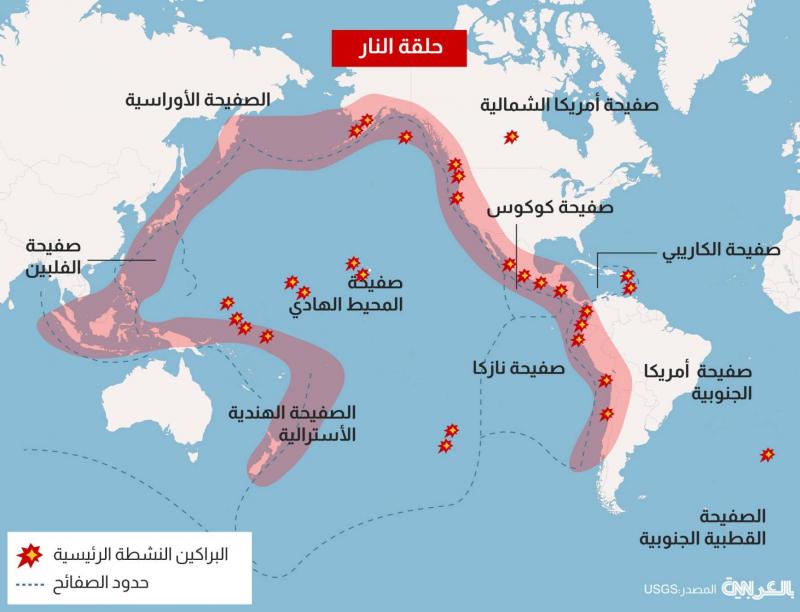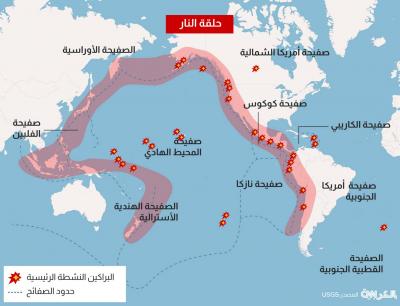Taiwan experienced its strongest earthquake in 25 years, resulting in building collapses and at least four fatalities, with tsunami warnings issued across the region, which were later lifted. The tsunami warnings prompted airlines and airports to suspend flights, which resumed later. The most active earthquakes in the world occur along what is known as the Ring of Fire, where tectonic plates press against each other, causing seismic tremors. This "ring" extends along an arc 25,000 miles (40,000 kilometers) long, from the boundaries of the Pacific Plate to smaller plates such as the Philippine Plate, and to the Cocos and Nazca plates that line the edge of the Pacific Ocean.
The people most at risk of volcanic eruptions and earthquakes live in countries along the Ring of Fire, including Chile, Japan, the west coast of the United States, and other island nations such as the Solomon Islands, extending to the west coast of North and South America.
**How was the Ring of Fire formed?**
Tectonic plates are large slabs of the Earth's crust. These rocks constantly move over the mantle, a layer of solid and molten rock beneath the Earth's crust. Volcanoes form along the Ring of Fire when one plate is forced under another into the mantle—a solid mass of rock located between the Earth’s crust and the molten iron core—through a process called subduction. Major earthquakes, which can lead to tsunami waves, also occur in subduction zones.
**How do earthquakes occur?**
Earthquakes represent the release of energy from deep within the Earth, where a vast amount of heat is stored. The heat drives the plates to move. When two plates move against each other, friction leads to energy accumulation. When this energy is released, it causes an earthquake. Hongfeng Yang, a seismologist at the Chinese University of Hong Kong, stated, “It takes tens of thousands of years for energy to build up, but it is released in just seconds.” Tectonic plates typically move at a rate of a few centimeters per year, but during an earthquake, they can move several meters per second.
**Can earthquakes along the Ring of Fire be predicted?**
Seismologists are currently unable to predict when or where earthquakes will occur, or their magnitude. Some researchers believe that certain conditions—such as hydraulic fracturing when drilling deep at sea to extract energy resources—can cause earthquakes. However, there is no scientific evidence to support this.




